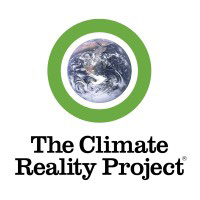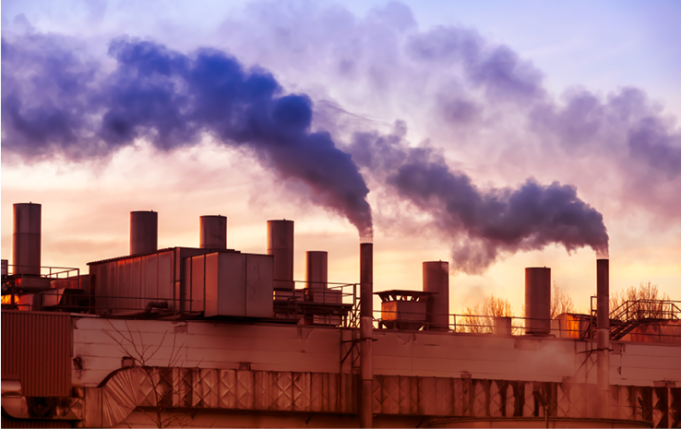When most people think of environmental issues, topics and phrases such as recycling, electric cars, community gardening, clean energy, and chemical-free are at the forefront of their minds.
However, there is also another reality of environmental issues that do not come to people’s minds or they may be unaware of, the degradation of health in majority Black and Brown communities.
Several reports regarding air pollution ranked Chicago’s South Side and West Side as having the worst air quality in the nation. Both areas of the city comprise of predominantly Black residents and were found to have some of the air pollutant known as PM2.5.
The air pollutant particulate matter 2.5, also known as PM2.5 consists of fine particles made of emissions from the combustion of gasoline, oil, diesel fluid or wood. This type of pollution can travel deep into the lungs and blood, increasing the risk of death from respiratory disease, as well as heart attacks and strokes, and cancer.

According to the British Heart Foundation, “Living for one year in an area with high levels of fine particulate matter (PM2.5), is as bad for human health as smoking 150 cigarettes a year.”
Ozone, particulate matter 2.5 and nitrogen dioxide have been linked to asthma, respiratory infections and premature death—and are especially harmful for children, the elderly and people with pre-existing conditions.
Executive Vice President of Conservation and Justice for the National Wildlife Federation Dr. Mustafa Santiago Ali stated, “The city of Chicago has intentionally created sacrifice zones through various methods and one way was with redlining. We must protect Black lives by not permitting industrial plants from coming into our communities. More people die from air pollution than car accidents.”
Redlining was a common practice where banks, urban planners, and real estate agents effectively limited Black and Brown people from living outside of limited areas on a map. This type of environmental racism is a clear example of environmental injustice.
Sacrifice zones were born out of redlining. The Climate Reality Project’s website states, “Sacrifice zones are often defined as populated areas with high levels of pollution and environmental hazards, thanks to nearby toxic or polluting industrial facilities. These areas are called ‘sacrifice zones’ because the health and safety of people in these communities is being effectively sacrificed for the economic gains and prosperity of others.”
How do places become sacrifice zones? One factor is the absence of proper government regulation. Another is that many times, people living in these areas lack either access to information to know about the pollution poisoning their community or the power to make policymakers do something about it. In many cases, they are, as activist Dr. Robert Bullard has said, “the wrong complexion for protection” under the law.
Air pollution contributes to an increased risk of chronic disease, which is the leading driver of Chicago’s nine-year life expectancy gap between Black and White residents and decreases in life expectancy in the Latino population.
City of Chicago’s Mayor-elect Brandon Johnson has plans to bring back the Department of Environment that was dismantled under the city’s former mayor, Rahm Emanuel’s administration due to budget cuts.
Mayor-elect Johnson stated he will bring the Department of Environment back, new and improved, and usher in a Chicago Green New Deal. Johnson’s website states, “On day one, he will order a comprehensive study of this city’s environmental needs, with a focus on identifying the hazards on the South and West sides.
This study can be finished in the first 100 days with the assistance of community groups and advocates. Then, new environmental regulations will be developed to reduce and mitigate the pollutants that are fouling our water and air, and it won’t take centuries for a Johnson administration to put those regulations into action.”
Audra M. Muhammad, a longtime South Side resident stated, “I am a certified asthma health specialist, and I have witnessed numerous children experiencing respiratory issues due to asthma. I have seen firsthand the effects of pollution, while working with children who lived in Altgeld Gardens, which is located on the far South Side of Chicago.”
Ms. Muhammad continued, “Black people need to be concerned with climate change; starting with local politics. We need to form a justice party with people who look like us and we place our demands on these politicians. We have to start thinking about our carbon footprint and become environmentalists. It is time that we understand how we are involved in reversing this catastrophe.”
The American Lung Association stated that life expectancy can be shortened by exposure to ozone and when inhaled, it reacts with our airways, which can cause inflammation and damage throughout the body.
Dr. Abdullah Hassan Pratt is an emergency room physician at the University of Chicago Hospital. “I have worked in other facilities that were predominantly White, and it was very rare that we used the nebulizer. Working at the University of Chicago, treating asthma-related issues is a common occurrence. I definitely believe that there is a significant correlation between the diesel emissions and poor respiratory health in our communities,” he stated.
“Community education regarding respiratory health as well as environmental issues are definitely needed and will play a major role in healing ourselves.”
The Respiratory Health Association released a report stating in part that between 2016 and 2021, there were 23,550 asthma-related emergency department visits among Chicago children 19 years old and younger. “Most of those visits, 70 percent (16,436), were among school age children 5-19 years. In total, Black children accounted for 53 percent of these 16,436 asthma-related emergency department visits. In children four years old and younger, 40% of visits were by Black children,” the report stated.
“While disparities in asthma-related emergency department visits exist across all races, the greatest gaps are between Black and White children—and that gap increased during the latest reporting period. As of 2021, Black children ages 5 to 19 years old were 4.3 times more likely to have an asthma-related emergency department visit than White children.
This is a 9% increase from the gap previously reported in 2016. Additionally, there were 3,148 ambulance visits to schools for asthma-related emergencies where race was documented. In these cases, 84% of students requiring an emergency department visit were Black. Notably, just 36% of Chicago Public School students are Black,” the report continued.
The City of Chicago Air Quality and Health Report noted that Communities with low socioeconomic status and high rates of chronic health conditions are especially vulnerable to the impacts of air pollution. “In Chicago, with its history of segregation and disinvestment in Black and Latino communities, the differences between neighborhoods can be stark.
Some communities have rates of poverty, cardiovascular disease, and chronic obstructive pulmonary disease (COPD) that are ten times greater than others. Structural racism and economic hardship contribute to this gap, making it more likely for certain people to live in polluted communities and less likely to have access to health care and good jobs that can mitigate negative impacts.”
(Shawntell Muhammad can be contacted at [email protected].)













